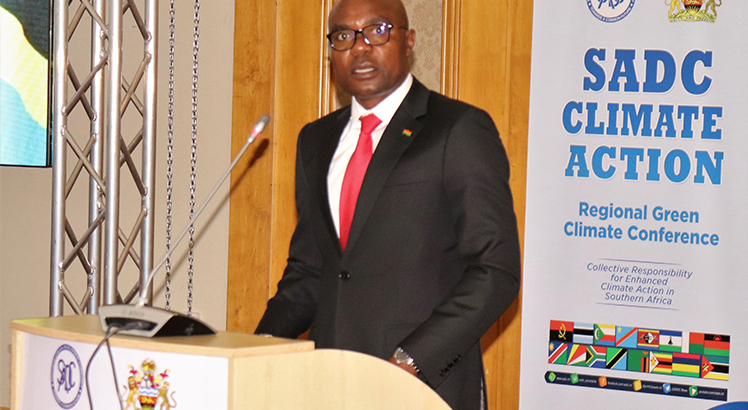Preserve biodiversity to stop malaria
Preservation of biodiversity can greatly contribute to reduction of malaria incidence in Malawi. This is so because biodiversity loss caused by human activities is responsible for the emergence and re-emergence of a number of infectious diseases, including malaria. In Malawi, malaria causes over eight million illnesses every year.
Malaria in Africa can be traced back to the time humans started to modify their environment to suit convenient nutritional and economical needs. Communities cleared forests for farmland and grazing of animals, creating in the process a favourable environment for breeding of anopheles mosquito, a vector of plasmodium, the parasite that causes malaria.
Studies have shown the relationship between biodiversity change and diseases, especially the relationship between forest quality and the incidence of malaria. Deforestation leads to change of local climate which may affect the spread of diseases. Cleared land receives more sunlight which favours anopheline larvae development. When ground temperature increases, the rate at which mosquitoes develop into adults also increases which in turn increases the frequency at which mosquitoes feed on blood and transmit malaria. The increase in temperature further increases the incubation of parasites within mosquitoes which increases the presence of parasites that can be transmitted. Further, deforestation leads to soil erosion and formation of gullies which trap water and eventually become breeding sites of mosquitoes.
Biodiversity degradation also leads to reduction in the number and variety of non-human species that are natural predators of mosquitoes. Biodiversity degradation results in elimination of species such as dragonflies, ladybugs, lacewings, goldfish that prey on anopheles larvae as well as the adult mosquito. Bats have even been reported to eat up to 1 000 mosquitoes per night. When natural predators are threatened or endangered due to habitat removal, the population of mosquitoes increases.
Considering that malaria distribution factors depend on ecological factors that affect the survival and multiplication of anopheles mosquito, stopping malaria can begin with stopping biodiversity loss. Preventing malaria, therefore, not only requires answering the question how by developing new drugs or repellants, but also requires us to answer the question why by trying to understand what led to the emergence and spread of malaria in the first place.
The World Health Organisation recognises the urgent need for better understanding of the ecology and biology of vectors that spread disease, such as mosquitoes and ticks. Better knowledge of the biology of anopheles mosquito and its interaction with ecosystems could improve strategies for mosquito control and reduce the number of infective bites.
Biodiversity does not only offer preventive solutions; biodiversity also provides treatment options for malaria through traditional medicine and drug development. About 1 277 plant species have been reported to treat malaria worldwide. Different plants such as guava, papaya, acacia, eucalyptus and neem taken in combination or individually have been known to treat or prevent malaria. Other plants such as Artemesia annua have also been reported to be effective even in treating drug -resistant malaria. Apart from these plants, marine biodiversity components have also proved to be a source of efficient natural drug compounds for malaria treatment.
Given all these options on eradicating and treating malaria from biodiversity, it is sad to note that more attention on malaria control strategies is on improvement of clinical malaria diagnosis and treatment rather than on programmes that control parasites. The present preventive and treatment measures for malaria depend on the purchase of manufactured remedies which are usually expensive. Moreover, drug resistance has been reported as one of the emerging challenges of malaria treatment, making prevention and treatment of malaria through the use of these manufactured remedies uncertain and costly.
If a fraction of the amount of money that the government allocates to the Ministry of Health for the treatment of malaria and other environmental health -related illnesses was allocated to ensuring that a healthy ecosystem is maintained in Malawi, malaria and other environmental -related diseases would be significantly reduced.
It is, therefore, important for the government to ensure that all malaria programmes take into consideration biodiversity issues. This will ensure prevention of malaria by ensuring that ecosystems are managed to achieve biological conservation and control plasmodium parasites in human population.
The author is a biodiversity scientist working for Environmental Affairs Department. She writes in her personal capacity.





